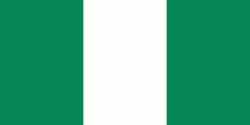Lafia
Lafia is a town in North Central Nigeria. It is the capital city of Nasarawa State and has a population of 330,712 inhabitants according to the 2006 census results. It is the largest town in Nasarawa state.
Lafia, also known as Lafian bare-bari, is the capital city of Nasarawa State, central Nigeria. Founded by Muhammadu Dunama in late 17th century on the site of a Koro (Migili) village. The indigenous Koro migrated southwards to Agyaragu, Anise etc. The town now has its 17th Emir in the person of Hon. Justice Sidi Bage Muhammad I JSC rtd. Lafia became the capital of a prominent local chiefdom in the late 19th century. During the rule of Mohamman Agwai (1881–1903), the Lafia market became one of the most important in the Benue Valley, and a trade route was opened to Loko (56 mi [90 km] southwest), a Benue River port. In 1903 the British, who controlled Northern Nigeria recognized Chief Musa as Lafia's first emir. The emirate formed the major part of the Lafia Division of Benue province. In 1967 the town became part of Benue-Plateau state, and in 1976 it was allocated to Plateau state. Lafia is populated mainly by the Eggon, Alago, Kanuri, Aho and Koro. It also has large populations of Igbo, Hausa, Mwaghavul settlers amongst other tribes. This is due to the hospitable nature of the indigenes and has made the city a miniature Nigeria.
Modern Lafia aside from being an administrative and educational centre, it is also a collecting point for sesame seeds, soybeans, and is a trading centre for yams, sorghum, millet, and cotton. Besides farming, cotton weaving and dyeing are traditionally important activities of the town's inhabitants. Livestock farming is also a prominent activity especially amongst the Fulani herdsmen.
The two royal families of Ari and Dallah Dunama of the Kanuri people (Bare-Bari) are the ruling houses of the Lafia Emirate. The current Emir is Sidi Bage, from the Dallah Dunama royal family. He succeeded the longest reigning Emir, HRH Isa Mustapha Agwai I (1976–2019).
Lafia, also known as Lafian bare-bari, is the capital city of Nasarawa State, central Nigeria. Founded by Muhammadu Dunama in late 17th century on the site of a Koro (Migili) village. The indigenous Koro migrated southwards to Agyaragu, Anise etc. The town now has its 17th Emir in the person of Hon. Justice Sidi Bage Muhammad I JSC rtd. Lafia became the capital of a prominent local chiefdom in the late 19th century. During the rule of Mohamman Agwai (1881–1903), the Lafia market became one of the most important in the Benue Valley, and a trade route was opened to Loko (56 mi [90 km] southwest), a Benue River port. In 1903 the British, who controlled Northern Nigeria recognized Chief Musa as Lafia's first emir. The emirate formed the major part of the Lafia Division of Benue province. In 1967 the town became part of Benue-Plateau state, and in 1976 it was allocated to Plateau state. Lafia is populated mainly by the Eggon, Alago, Kanuri, Aho and Koro. It also has large populations of Igbo, Hausa, Mwaghavul settlers amongst other tribes. This is due to the hospitable nature of the indigenes and has made the city a miniature Nigeria.
Modern Lafia aside from being an administrative and educational centre, it is also a collecting point for sesame seeds, soybeans, and is a trading centre for yams, sorghum, millet, and cotton. Besides farming, cotton weaving and dyeing are traditionally important activities of the town's inhabitants. Livestock farming is also a prominent activity especially amongst the Fulani herdsmen.
The two royal families of Ari and Dallah Dunama of the Kanuri people (Bare-Bari) are the ruling houses of the Lafia Emirate. The current Emir is Sidi Bage, from the Dallah Dunama royal family. He succeeded the longest reigning Emir, HRH Isa Mustapha Agwai I (1976–2019).
Map - Lafia
Map
Country - Nigeria
 |
 |
| Flag of Nigeria | |
Nigeria has been home to several indigenous pre-colonial states and kingdoms since the second millennium BC, with the Nok civilization in the 15th century BC, marking the first internal unification in the country. The modern state originated with British colonialization in the 19th century, taking its present territorial shape with the merging of the Southern Nigeria Protectorate and Northern Nigeria Protectorate in 1914 by Lord Lugard. The British set up administrative and legal structures while practising indirect rule through traditional chiefdoms in the Nigeria region. Nigeria became a formally independent federation on 1 October 1960. It experienced a civil war from 1967 to 1970, followed by a succession of military dictatorships and democratically elected civilian governments until achieving a stable democracy in the 1999 presidential election. The 2015 general election was the first time an incumbent president failed to be re-elected.
Currency / Language
| ISO | Currency | Symbol | Significant figures |
|---|---|---|---|
| NGN | Nigerian naira | ₦ | 2 |
| ISO | Language |
|---|---|
| EN | English language |
| HA | Hausa language |
| IG | Igbo language |
| YO | Yoruba language |















